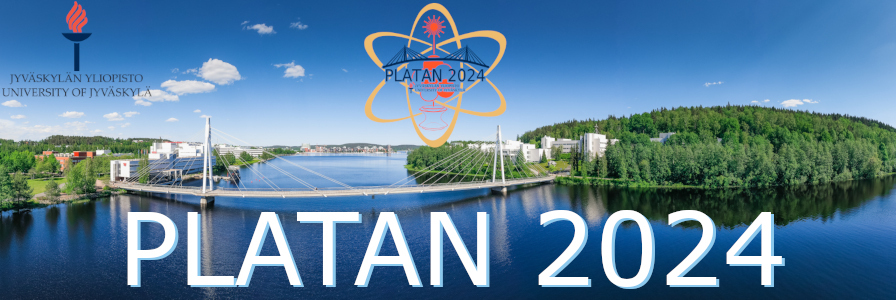Speaker
Description
A new method for the determination of the eigenfrequencies of laser-cooled ions in a Penning trap has been recently demonstrated. It relies on the measurement of the ion’s motional amplitude using the scattered photons when an internal optical electric dipole transition is addressed by lasers [1]. Compared to other techniques, it is universal regarding the mass-to-charge ratio, it is non-destructive, and allows the observation of motional amplitudes of only a few micrometers, which drastically reduces the systematic uncertainties.
In this contribution, we will present the measurement of the cyclotron-frequency ratios of several calcium isotopes ($^{42,44,48}$Ca$^+$ vs $^{40}$Ca$^+$) using this optical detection method [2]. Single ions are laser-cooled to temperatures in the order of millikelvin [3] and subsequently probed by an oscillating electric field close to one of its eigenfrequencies. The motional amplitude is readout using photon-counting and photon-imaging units while re-cooling the system to the Doppler limit after excitation.
The optical method has also been proved with two-ion Coulomb crystals, yielding the first measurements of the six eigenfrequencies of a balanced ($^{40}$Ca$^+$ - $^{40}$Ca$^+$) and unbalanced ($^{42}$Ca$^+$ - $^{40}$Ca$^+$) crystal, previously studied theoretically in Ref. [4]. The uncertainty from these measurements and the prospects for improvement by accessing the quantum regime will be briefly discussed [5]. We will also present the status of the recent upgrade of our Penning-trap experiment after the installation of a new cryogen-free superconducting magnet.
[1] D. Rodríguez, Appl Phys B 107, 1031–1042 (2012).
[2] J. Berrocal et al., Phys. Rev. Research 6, L012001 (2024).
[3] J. Berrocal et al., Phys. Rev. A 105, 052603 (2022).
[4] M. J. Gutiérrez et al., Phys. Rev. A 100, 063415 (2019).
[5] J. Cerrillo and D. Rodríguez, EPL- Perspective 134, 38001 (2021).

